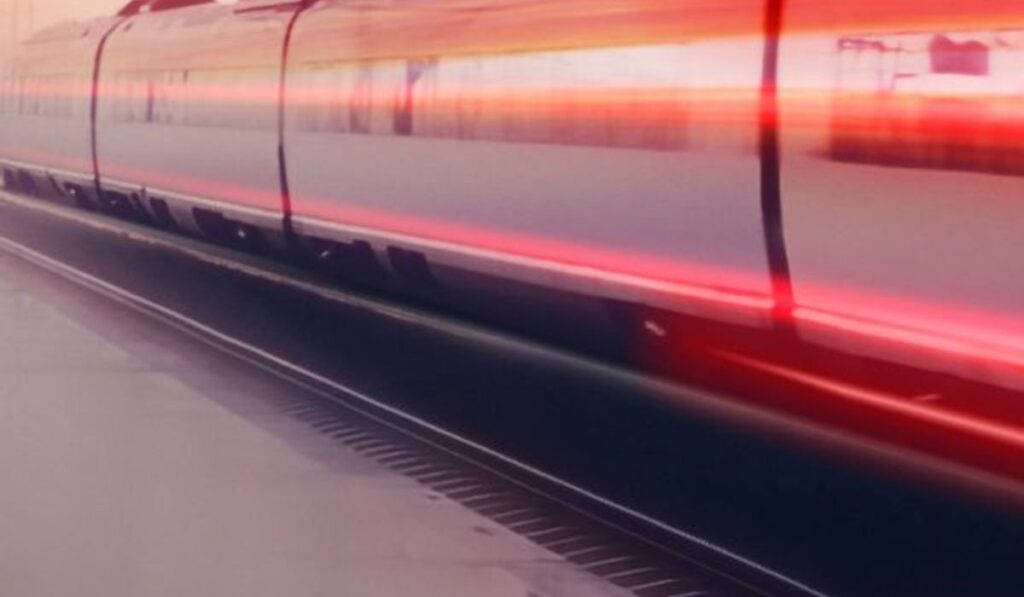Vodafone Germany activates 5G+ on more than half of all railway tracks.
- Vodafone has been building more than 225 new mobile phone stations on railway lines since the beginning of the year
- Networks in ICE tunnels and at more than 1,200 locations strengthened
- 5G+ activated on more than half of all railway tracks
- Germany’s train stations are also benefiting from network expansion; more than half already have 5G.
Table of Contents
On certain train routes, passengers still experience phone call interruptions. Either the network is having trouble getting inside the carriage or the train is passing through a radio hole. “We’re working very hard right now on both challenges,” as per the Vodafone blog post. In addition to expanding the network along the rail lines, Deutsche Bahn also plans to increase the permeability of the glass panes in ICE and IC vehicles to mobile phone signals. Vodafone has been bolstering the mobile network on long-distance and regional routes since the beginning of 2023. In the last 10 months, the business has completed 1,237 building projects around the country.
As part of the network expansion, 225 new cell phone masts were built near the tracks, closing many annoying dead spots for rail travelers. The most new construction projects were in North Rhine-Westphalia (36), Bavaria (31) and Lower Saxony (29).

“225 new mobile phone stations – we are closing a dead zone on Germany’s railway lines every day. “Thanks to the new buildings and the numerous modernization measures on the existing antennas, we were able to noticeably improve the mobile phone coverage for rail passengers and commuters,” says Vodafone technology boss Tanja Richter. “Sending emails, calling family, streaming music – many train travelers use their smartphones while on the move.
A stable mobile network is essential for this.” However, there is still a lot to be done before all railway routes are actually provided with stable, fast mobile communications. Tanja Richter also points this out: “Especially on trains, it is notoriously difficult to provide good and reliable network coverage for passengers.”
Network expansion at train stations and routes in regional and long-distance transport
Closing the supply gaps benefits both ICE and IC passengers on significant long-distance routes and commuters on numerous regional routes. High bandwidths, quick response times, and dependable data transfer are guaranteed by a number of additional extension strategies. This year’s new construction sites are all equipped with LTE technology, 66 with 5G technology, and over 200 with 5G+ technology.
5G+ available on more than 15,000 kilometers of rail
Vodafone has enhanced transmission capacity by 33% across the board in key tunnels on ICE routes where network expansion is extremely difficult. 5G+ (5G standalone) is already accessible on more than half of the railway lines, totaling over 15,000 kilometers. In addition, Vodafone has 5G coverage at nearly 1,800 of Germany’s 3,250 train stations. More than 600 of these have indoor 5G coverage. While Vodafone is primarily working to improve capacity at Berlin Central Station, train stations in Frankfurt, Cologne, Leipzig, and Hamburg are now enjoying 5G coverage indoors.

Infrastructure partnership: Vodafone & Deutsche Bahn
Vodafone and Deutsche Bahn have formed an infrastructure cooperation to promote the spread of mobile communications along railway tracks. The collaboration’s goal is to deliver a seamless LTE mobile network with high bandwidths on particularly popular train routes by 2025.
This is especially advantageous for passengers on Deutsche Bahn trains who utilize the Vodafone network. Furthermore, by 2025, Vodafone will be the first mobile phone carrier to deploy its 5G+ network on a substantial scale on Germany’s ICE lines. Rail passengers will benefit from very short response times for the first time, in addition to high bandwidths.
In addition, Vodafone is also pushing ahead with the expansion of mobile communications along the secondary routes in order to achieve almost comprehensive mobile phone coverage here by 2024.
Meanwhile, Deutsche Bahn has announced that it will improve mobile phone reception for passengers on long-distance trains using laser technology. In the coming years, 70,000 windows on 3,300 ICE and IC cars will be laser-processed so that mobile phone signals reach the train directly via the windows. Previously, this required repeaters in the trains to amplify the mobile phone signal and carry it inside.

